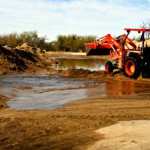 On Thursday, the Good Sam Camping blog discussed ways to reduce rattling in the RV’s interior compartments. Today’s article focuses on tracking down rattles in other parts of the RV.
On Thursday, the Good Sam Camping blog discussed ways to reduce rattling in the RV’s interior compartments. Today’s article focuses on tracking down rattles in other parts of the RV.
There is a new saying for RVers. “There are two types of RVs, those that rattle, and those that don’t move.” If you want to avoid rattles, leave your RV in the driveway or in a long-term park. If you drive it, it will rattle.
But if the rattles are driving you batty, there is hope. If you take the proper steps and follow certain precautions, you can minimize—if not completely stop—those annoying rattles as you venture down the highway.
Reducing Rattles in the RV Itself
It stands to reason. If you drive your RV down the road, you will over time shake your RV loose from its fittings.
But rattles are your friends. They tell you something is working loose—a screw, a bracket, or a clamp. Locating these rattles takes a bit of sleuthing. The first step is to inspect in your lockers, grabbing pipes and joints and shaking to see if they are tight. Look for screws that are working loose, see if you can move the brackets that hold everything in place. Then tighten everyting you can find that is loose.
Next climb under your rig and shake the exhaust pipe, the side panels, and anything else held on by screws or brackets and tighten where necessary. Do not attempt this while driving.
Last, after you have completed all this, have a passenger sit in various locations in your RV and as you drive listen closely for the location and source of any remaining rattles. Pull over to the side and look for the source and tighten, then drive off and see if you have silenced the offender. Repeat until you have located each noise and corrected.
Now drive off in your new noise and rattle free RV – until time takes its toll and you have to repeat the process all over again, hopefully well into the future.

